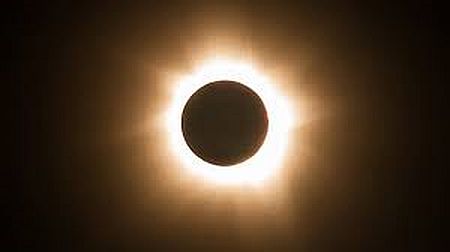Advice about eye protection when viewing solar eclipse
Optometrists in Ireland are advising the public to exercise caution in viewing next week’s solar eclipse, on Friday, 20 March 2015, as prolonged exposure to direct rays of the Sun can burn the retina.
Next Friday (20th March) there will be a total solar eclipse over the northern hemisphere at the Faroe Islands (Norway) and a rare 92 per cent partial eclipse over Ireland. The eclipse will be visible from 8.30am in the morning, peaking at about 9.30am and complete by 10.40am.
If the retina is damaged, vision is affected and it can take up to a year to heal, but in some cases there can be lasting damage known as solar retinopathy.
The Association of Optometrists Ireland said that the safest way to view the eclipse is to make a small hole in a card, hold it up to the sun and project the image on the ground or a second piece of white card. People should not view the sun directly through the hole. The eclipse can also be safely viewed through appropriate filters called eclipse glasses. It is essential that these glasses have no scratches or damage to the lenses. The glasses should be available through astronomy clubs. High protection welding goggles are also suitable (filter 14 or over).
Sunglasses or 3D viewing glasses are not suitable and should not be used.
A sharper image can be obtained by using a pair of binoculars. The binoculars should be set up on a stand or tripod, with the lenses directed at the Sun and the eyepiece focussing on a piece of white card. The Sun must not be viewed through the binoculars or telescope directly under any circumstances.
Northern Scotland will have the best view of the partial eclipse, where more than 98 per cent of the Sun will be covered; for London and south east England it will be around 85 per cent.
